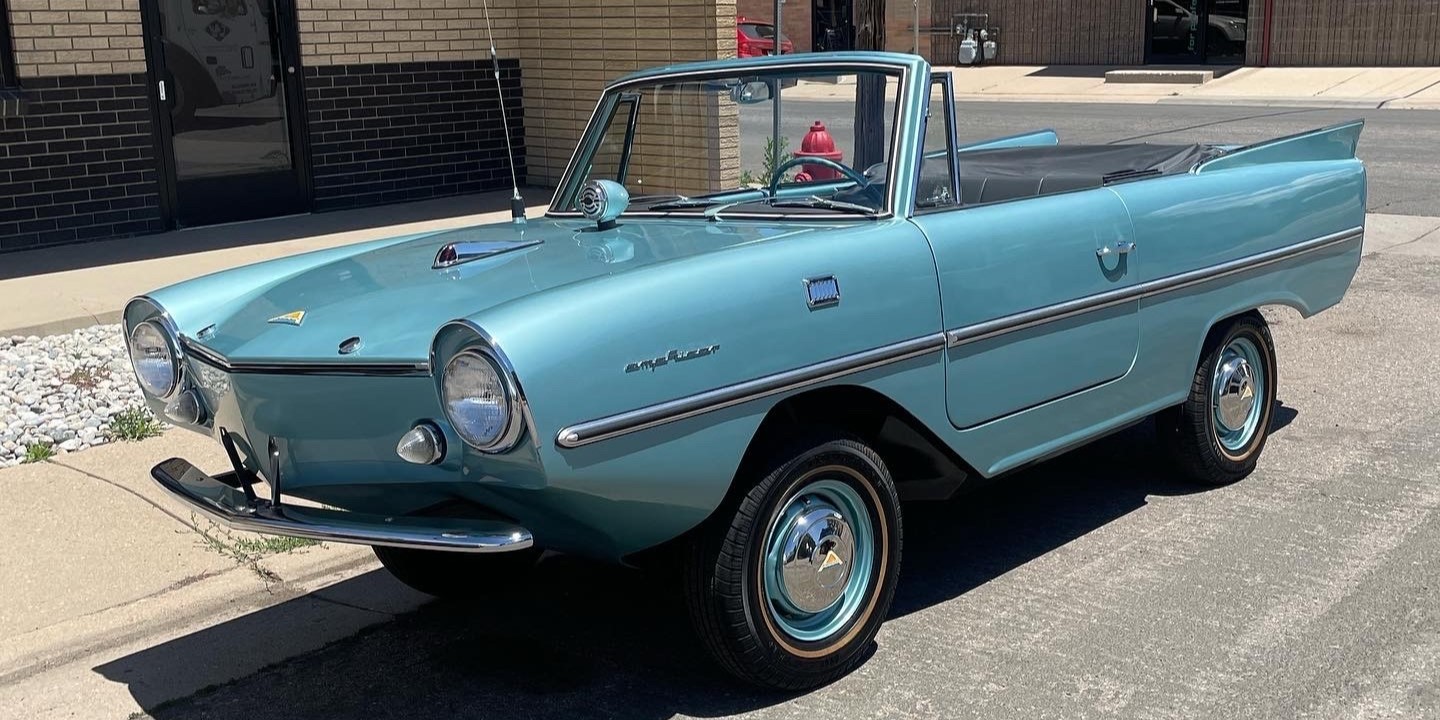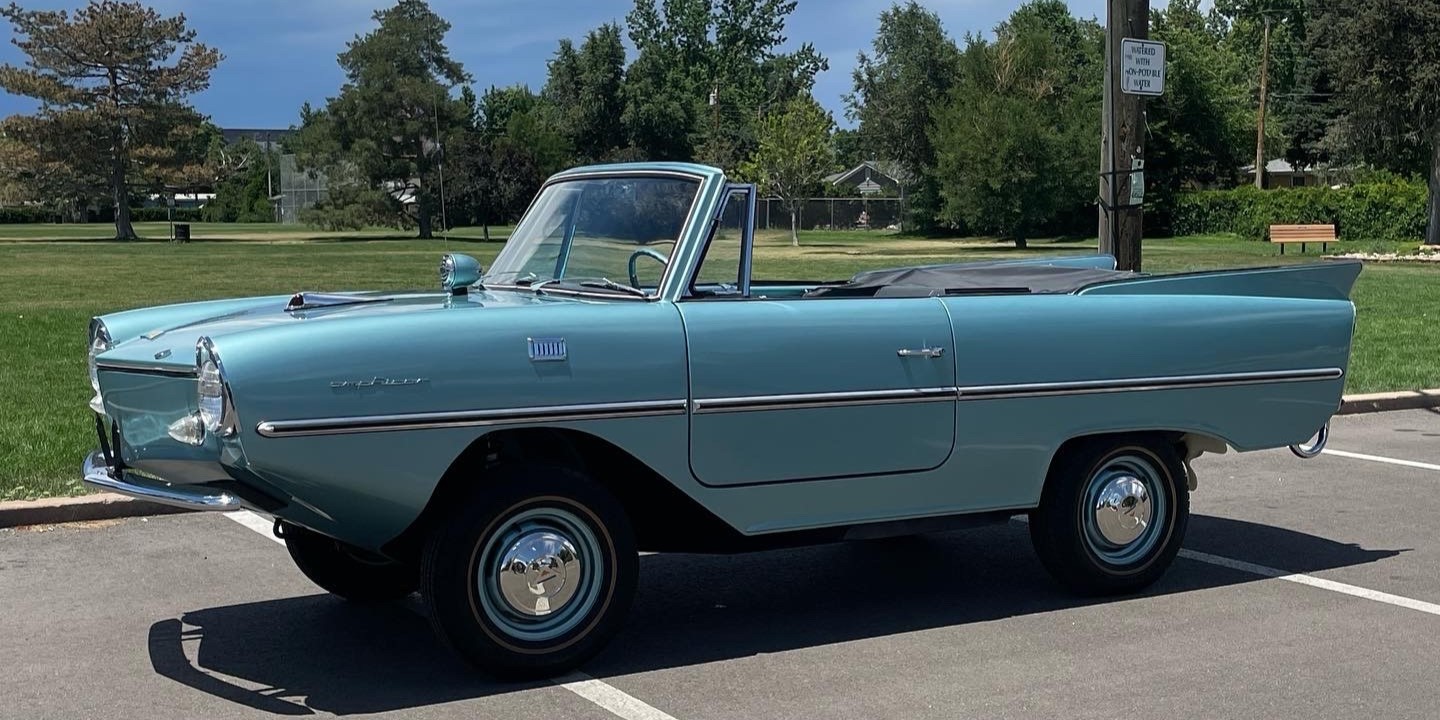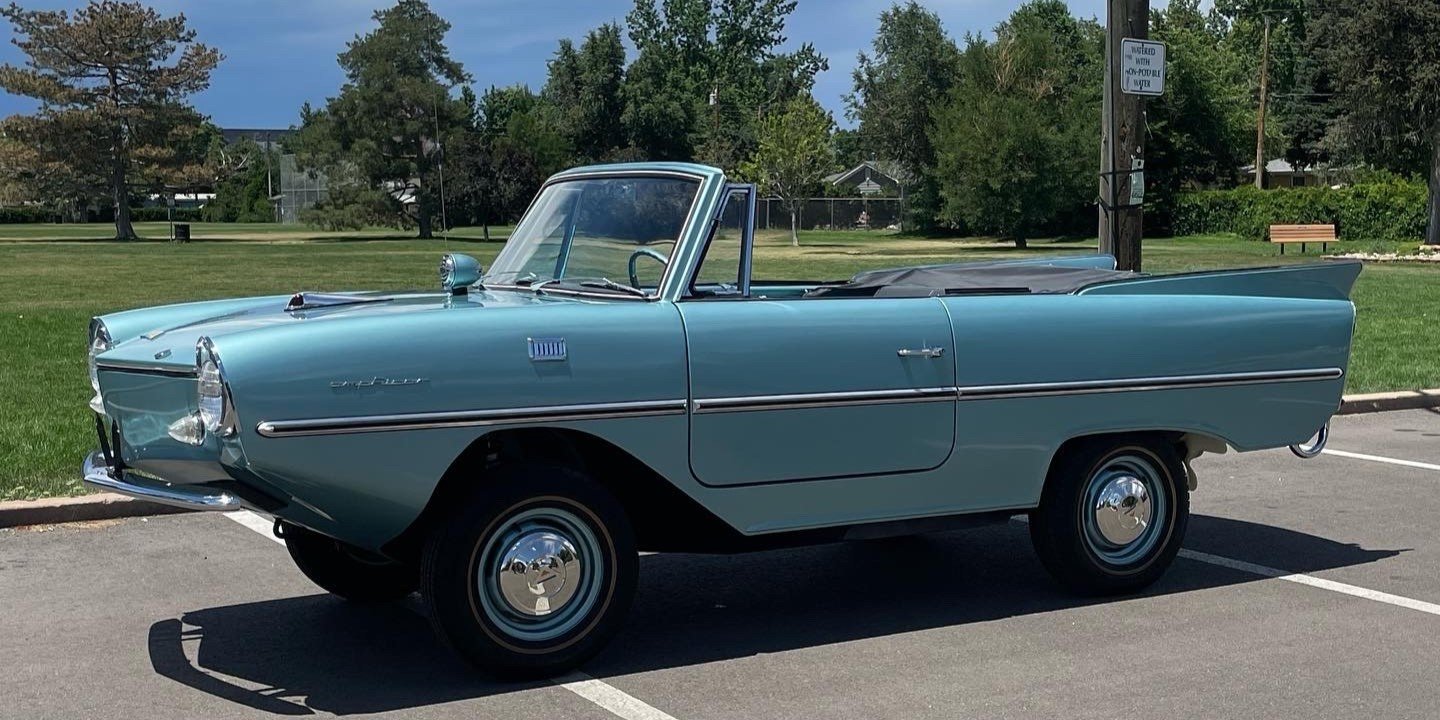The Mystery of the Amphicar
Here at the shop, we love to highlight the real oddities that move through our shop and showroom. Over the past few years, we've had plenty of memorable motors, from the pair of Vespas that showed up and our friend the Dodgem Bumper Car. This time, we'll highlight the fastest car on water and the fastest boat on land, our friend currently hanging around the showroom, the Amphicar 770. The Amphicar 770 was introduced at the 1961 New York International Auto Show. The 770 designation represents the vehicle's top speeds, 7 knots on water and 70 miles per hour on land. Before the big reveal, designer Hans Trippel had designed his purpose-built boat car over many years. Initially, Hans looked at this earlier SG6 design as a jumping-off point. After all, Volkswagen had used a similar design to come up with their military-grade Schwimmwagen. Hans continued to develop a few unique models, including the Alligator and the roadgoing SK10.

Hans saw a potential market for a sporty, amphibious cabriolet designed for the masses rather than military use. While Hans would become most well-known for his amphibious design, his actual claim to fame was the original patent for the 'gull-wing' door. Hans saw the unique door layout as a way to get out of his amphibious vehicle without subjecting the car to hundreds of gallons of water rushing over the door sills.

In the end, Hans sold the door patent off to Mercedes, and they seemed to do pretty well with the design, leading to their iconic 300SL 'Gullwing.'
Swimming back to our Amphicar, the model only saw a short production run from 1961 to 1968, with many of the last cars built in 1965 and 1966. Throughout production, many of the 3,800 units produced would make their way to the States as we quickly became the most popular market for the wild ride. In total, just under 100 examples were produced for Right-hand drive markets. For Hans, the car was becoming successful. Unfortunately, new emissions and crash safety regulations in the United States introduced in 1968 would lead to the death of the Amphicar, as the vehicle could no longer be sold due to these standards. By then, European styling tastes had also moved from the aging fin-tail design. Within a few short years, the brand went from complete production-level manufacturing until regulations and waning interest could no longer keep the brand alive.
 By 1969, Amphicar had joined numerous marquees and became another forgotten relic of the past. The model made a mark on popular culture during the short production run. One of the most famous owners was President Lyndon B. Johnson, who was known to get passengers into the car and drive into the lake at his house, shouting, "the brakes are out!". You can be sure we've given those drum brakes a good look over before this one gets ready to roll out.
By 1969, Amphicar had joined numerous marquees and became another forgotten relic of the past. The model made a mark on popular culture during the short production run. One of the most famous owners was President Lyndon B. Johnson, who was known to get passengers into the car and drive into the lake at his house, shouting, "the brakes are out!". You can be sure we've given those drum brakes a good look over before this one gets ready to roll out.
 This Amphicar 770 from 1967 came to us from a very loving family that had seen the car undergo an extensive restoration by their father. He spent countless hours getting this forgotten icon back to running and driving condition. He also added the fuel injection system, which has helped to make this classic much more reliable out on the open seas. We recently finished with detail and some mechanical work to get this classic all squared away.
This Amphicar 770 from 1967 came to us from a very loving family that had seen the car undergo an extensive restoration by their father. He spent countless hours getting this forgotten icon back to running and driving condition. He also added the fuel injection system, which has helped to make this classic much more reliable out on the open seas. We recently finished with detail and some mechanical work to get this classic all squared away.
 If you want to learn more about this amphibious classic, you can find more on our sales page here, or you can always send an email to info@farlandcars.com. Thanks for stopping by! If you'd like to see the fun going on over in the shop, you can check that out here.
If you want to learn more about this amphibious classic, you can find more on our sales page here, or you can always send an email to info@farlandcars.com. Thanks for stopping by! If you'd like to see the fun going on over in the shop, you can check that out here.
